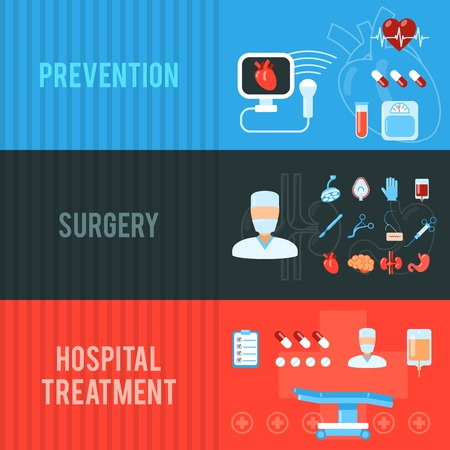Introduction to Electrotherapy in Post-Surgical Care
Electrotherapy has long been recognised as a valuable adjunct in the rehabilitation process following surgical procedures. Its roots can be traced back to the 18th century, when early practitioners began exploring the therapeutic benefits of electrical stimulation for pain relief and muscle recovery. In modern UK healthcare, electrotherapy forms an integral part of post-surgical rehabilitation strategies, particularly within the National Health Service (NHS). The NHS has incorporated various electrotherapy modalities into its physiotherapy protocols, aiming to optimise patient outcomes, reduce recovery times, and enhance overall quality of life following surgery.
Common surgeries that frequently utilise electrotherapy interventions in their post-operative care pathways include orthopaedic procedures such as total knee and hip replacements, anterior cruciate ligament (ACL) reconstructions, and rotator cuff repairs. Additionally, patients recovering from spinal surgeries, fracture fixations, and some abdominal or gynaecological operations may also benefit from targeted electrotherapy techniques. These interventions are designed to address specific challenges encountered during recovery—such as pain management, oedema reduction, muscle strengthening, and prevention of post-operative complications like joint stiffness or muscle atrophy.
In summary, electrotherapy has established itself as a cornerstone in multidisciplinary post-surgical rehabilitation within the UK. Its continued relevance is supported by ongoing research and clinical practice guidelines across NHS trusts, ensuring that patients receive evidence-based care tailored to their unique needs following surgery.
Types of Electrotherapy Interventions Utilised
Within British physiotherapy practice, a range of electrotherapy modalities are routinely employed to support post-surgical rehabilitation. These interventions are selected based on clinical assessment, patient-specific goals, and current best evidence. Below is an overview of the most commonly used electrotherapy modalities, along with their indications and brief descriptions relevant to the UK healthcare context.
| Modality | Description | Typical Indications |
|---|---|---|
| TENS (Transcutaneous Electrical Nerve Stimulation) | Application of low-voltage electrical currents via surface electrodes to modulate pain perception. | Pain management following orthopaedic or soft tissue surgery; suitable for both acute and chronic pain stages. |
| NMES (Neuromuscular Electrical Stimulation) | Delivers electrical impulses to activate specific muscle groups, assisting in muscle contraction and re-education. | Muscle strengthening and prevention of atrophy in immobilised limbs after joint replacement or ligament repair. |
| Therapeutic Ultrasound | Utilises high-frequency sound waves to promote tissue healing and reduce inflammation through deep tissue penetration. | Facilitates recovery from tendon repairs, ligament injuries, and scar tissue management post-operatively. |
| Interferential Therapy (IFT) | Employs two medium-frequency currents that intersect to provide deeper tissue stimulation with reduced skin discomfort. | Management of post-operative pain and swelling, particularly useful after major orthopaedic procedures. |
| Pulsed Shortwave Diathermy (PSWD) | Applies electromagnetic energy to generate heat within body tissues, enhancing circulation and reducing stiffness. | Used in later rehabilitation stages for joint stiffness or soft tissue adhesions following surgery. |
The selection of these modalities is always tailored to individual patient needs. British physiotherapists consider factors such as surgical protocol, wound integrity, contraindications, and patient preference when integrating electrotherapy into rehabilitation plans. It is essential for patients to be informed about the purpose and expected outcomes of each modality as part of a collaborative recovery process.

3. Evidence for Clinical Effectiveness
When considering the effectiveness of electrotherapy interventions in post-surgical rehabilitation, it is essential to rely on high-quality evidence and respected guidelines. In the UK, the National Institute for Health and Care Excellence (NICE) provides authoritative recommendations regarding clinical practice, including rehabilitation after surgery. According to NICE guidelines, specific electrotherapy modalities—such as Transcutaneous Electrical Nerve Stimulation (TENS), Neuromuscular Electrical Stimulation (NMES), and pulsed shortwave diathermy—are sometimes recommended as adjuncts to conventional physiotherapy, particularly for pain management and muscle re-education.
Several UK-based studies have explored the impact of these modalities on patient outcomes following orthopaedic and soft tissue surgeries. For example, research from NHS Trust hospitals has demonstrated that NMES can help reduce quadriceps atrophy after knee surgery, potentially accelerating functional recovery when combined with standard exercises. Similarly, TENS has been shown to provide short-term pain relief for post-operative patients, contributing to greater comfort and improved participation in early mobilisation programmes.
However, it is important to note that evidence for electrotherapy’s effectiveness can vary depending on the type of intervention, the surgical procedure involved, and individual patient factors. NICE emphasises a tailored approach; clinicians are encouraged to consider patient preference, surgical history, and rehabilitation goals when incorporating electrotherapy into care plans. While some systematic reviews suggest moderate benefits for pain reduction and muscle function restoration, other reviews highlight a lack of robust long-term data or indicate only marginal gains compared to best-practice physiotherapy alone.
In summary, electrotherapy interventions hold promise as part of a holistic post-operative rehabilitation strategy in the UK context, particularly for targeted indications such as pain relief and muscle activation. Nonetheless, their use should be guided by current evidence, clinical judgement, and patient-centred decision-making—aligning with both NICE guidance and findings from contemporary British research.
4. Patient-Centred Outcomes and Safety Considerations
When evaluating the effectiveness of electrotherapy interventions in post-surgical rehabilitation, it is essential to focus on patient-centred outcomes and safety considerations. Within the NHS and other British healthcare settings, both clinicians and patients emphasise the importance of not only clinical efficacy but also the quality of the patient experience. This holistic approach ensures that treatment decisions align with the values, preferences, and individual recovery goals of each patient.
Patient Experiences: Voices from Rehabilitation
Patients who undergo electrotherapy as part of their post-surgical rehabilitation often report a variety of experiences. These can range from improvements in pain management and functional mobility to concerns about sensation or discomfort during treatment sessions. The following table summarises common themes reported by patients and observed by clinicians:
| Aspect | Patient Perspective | Clinical Staff Perspective |
|---|---|---|
| Pain Relief | “Noticeable reduction in discomfort after sessions.” | Often observe improved pain scores post-treatment. |
| Functionality | “Able to move more freely during daily activities.” | Improvements in range of motion and strength noted. |
| Treatment Tolerance | “Mild tingling or warmth; generally well tolerated.” | Minimal adverse reactions reported when protocols followed. |
| Overall Satisfaction | “Appreciate personalised approach and clear explanations.” | Emphasis on informed consent and patient education. |
Potential Benefits of Electrotherapy Interventions
The primary benefits highlighted in British rehabilitation settings include:
- Enhanced Pain Management: Many patients experience quicker relief from post-surgical pain, facilitating earlier engagement in physiotherapy exercises.
- Accelerated Recovery: Improvements in circulation and reduction in swelling can contribute to faster tissue healing and return to function.
- Personalised Treatment Plans: Interventions are often tailored, taking into account patient feedback and progress, which aligns with NHS values of shared decision-making.
Known Risks and Safety Considerations
While electrotherapy is generally considered safe when administered by trained professionals, certain risks must be communicated clearly to patients:
- Irritation or Discomfort: Some individuals may feel tingling, skin irritation, or mild discomfort during treatment sessions.
- Poor Suitability for Certain Patients: Those with pacemakers, active infections, or specific medical conditions may not be suitable candidates for electrotherapy interventions.
- Adherence to Protocols: Strict adherence to established guidelines minimises the risk of adverse events and ensures consistent patient safety across NHS facilities.
The Importance of Shared Decision-Making
A defining feature of British healthcare practice is shared decision-making between clinical staff and patients. Open communication regarding potential benefits and known risks fosters trust, enhances satisfaction, and empowers patients to take an active role in their recovery journey. Regular feedback sessions allow care plans to be adjusted according to individual response, further supporting positive outcomes in post-surgical rehabilitation.
5. Integration with Multidisciplinary Rehabilitation
In the context of post-surgical rehabilitation across the UK, electrotherapy is rarely used in isolation. Instead, it is increasingly recognised as an effective adjunct to a broader, multidisciplinary approach. The integration of electrotherapy with physiotherapy, occupational therapy, and psychological support ensures that patients receive comprehensive care tailored to their unique needs.
The Role of Multidisciplinary Teams in the UK
Within NHS and private healthcare settings, multidisciplinary teams (MDTs) are standard practice for managing complex post-surgical cases. These teams typically include physiotherapists, occupational therapists, surgeons, pain specialists, and sometimes psychologists. Electrotherapy modalities—such as TENS or NMES—are discussed collaboratively within these MDTs to determine their suitability and timing within an individual’s recovery pathway.
Complementary Benefits of Electrotherapy
Electrotherapy interventions can complement traditional rehabilitation techniques by addressing pain management, reducing inflammation, and supporting muscle re-education. For instance, while physiotherapists may focus on manual therapy and exercise prescription, incorporating electrotherapy can help manage acute discomfort, enabling earlier participation in active rehabilitation. This synergy enhances functional outcomes and patient satisfaction.
Personalised Care Plans
Personalisation is a cornerstone of UK rehabilitation services. MDTs collaborate to develop bespoke treatment plans that may incorporate electrotherapy alongside other evidence-based interventions. Regular team meetings ensure progress is monitored and adjustments are made promptly, reflecting the dynamic needs of each patient throughout their recovery journey.
This collaborative model not only maximises the benefits of electrotherapy but also upholds a patient-centred ethos—ensuring care remains holistic, coordinated, and responsive to the evolving demands of post-surgical rehabilitation in the UK.
6. Barriers, Challenges, and Future Directions in the UK
Despite the recognised benefits of electrotherapy interventions in post-surgical rehabilitation, their implementation within the NHS faces several notable barriers.
Identification of Common Barriers
One of the most significant challenges is resource allocation. Many NHS facilities experience constraints related to funding, staffing, and equipment availability, which can restrict access to advanced electrotherapy devices. Additionally, variations in local commissioning policies often result in inconsistent provision across different regions of the UK.
Ongoing Debates and Professional Perspectives
There continues to be debate among clinicians regarding the evidence base for certain modalities of electrotherapy. While some therapies have robust support from clinical trials, others are still viewed with caution due to limited or conflicting data. This has led to variability in practitioner confidence and uptake, further compounded by differences in training opportunities and professional development.
Future Potential for Innovation
The future of electrotherapy within the British healthcare context appears promising, particularly as technological advancements emerge and more high-quality research becomes available. Innovations such as personalised treatment protocols, integration with digital health platforms, and remote monitoring may enhance patient outcomes and increase accessibility. Furthermore, ongoing collaboration between researchers, clinicians, and policymakers will be vital in ensuring equitable access and optimised use of these interventions across the NHS. As the landscape evolves, a patient-centred approach—one that balances efficacy, safety, and individual needs—will remain essential for maximising the potential of electrotherapy in post-surgical rehabilitation.


